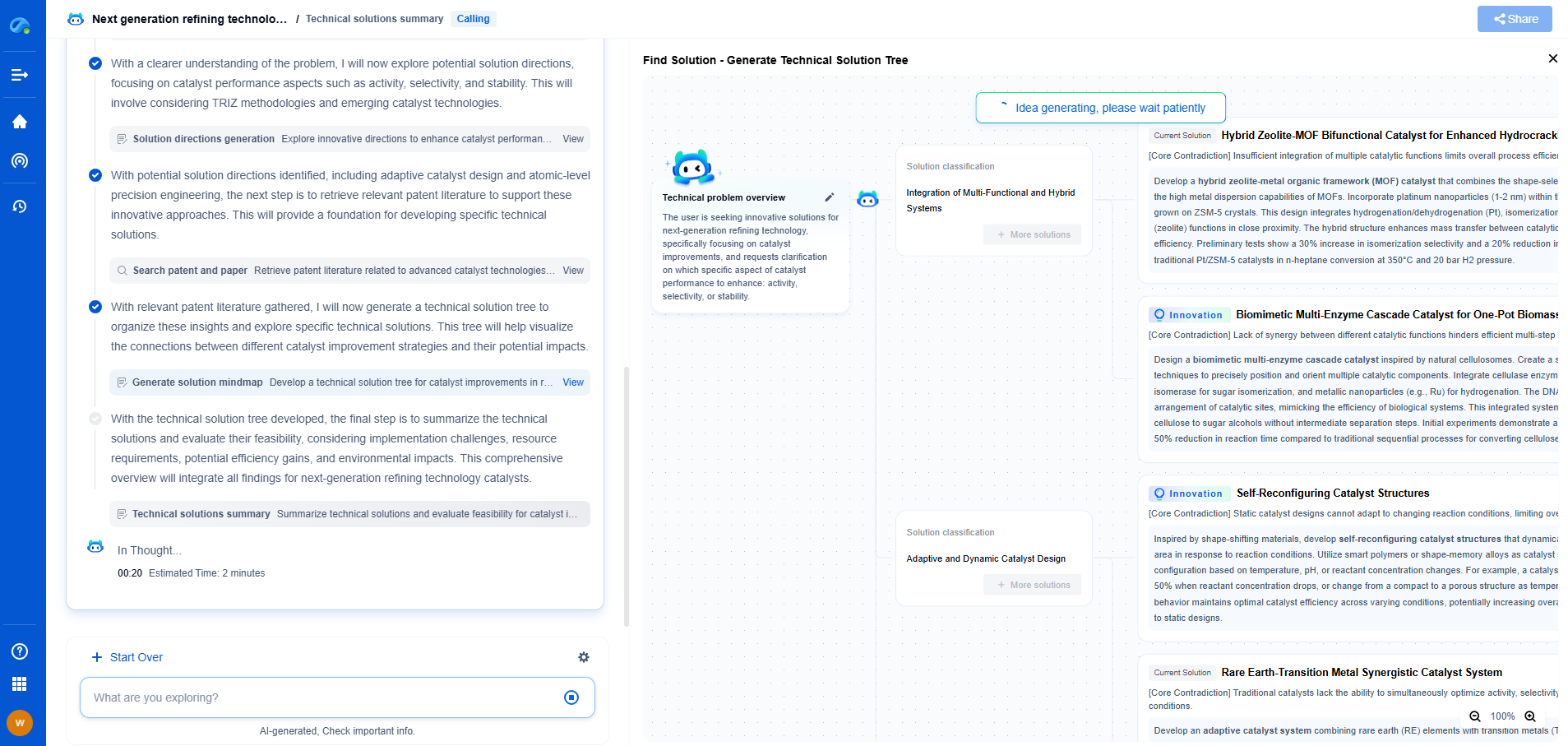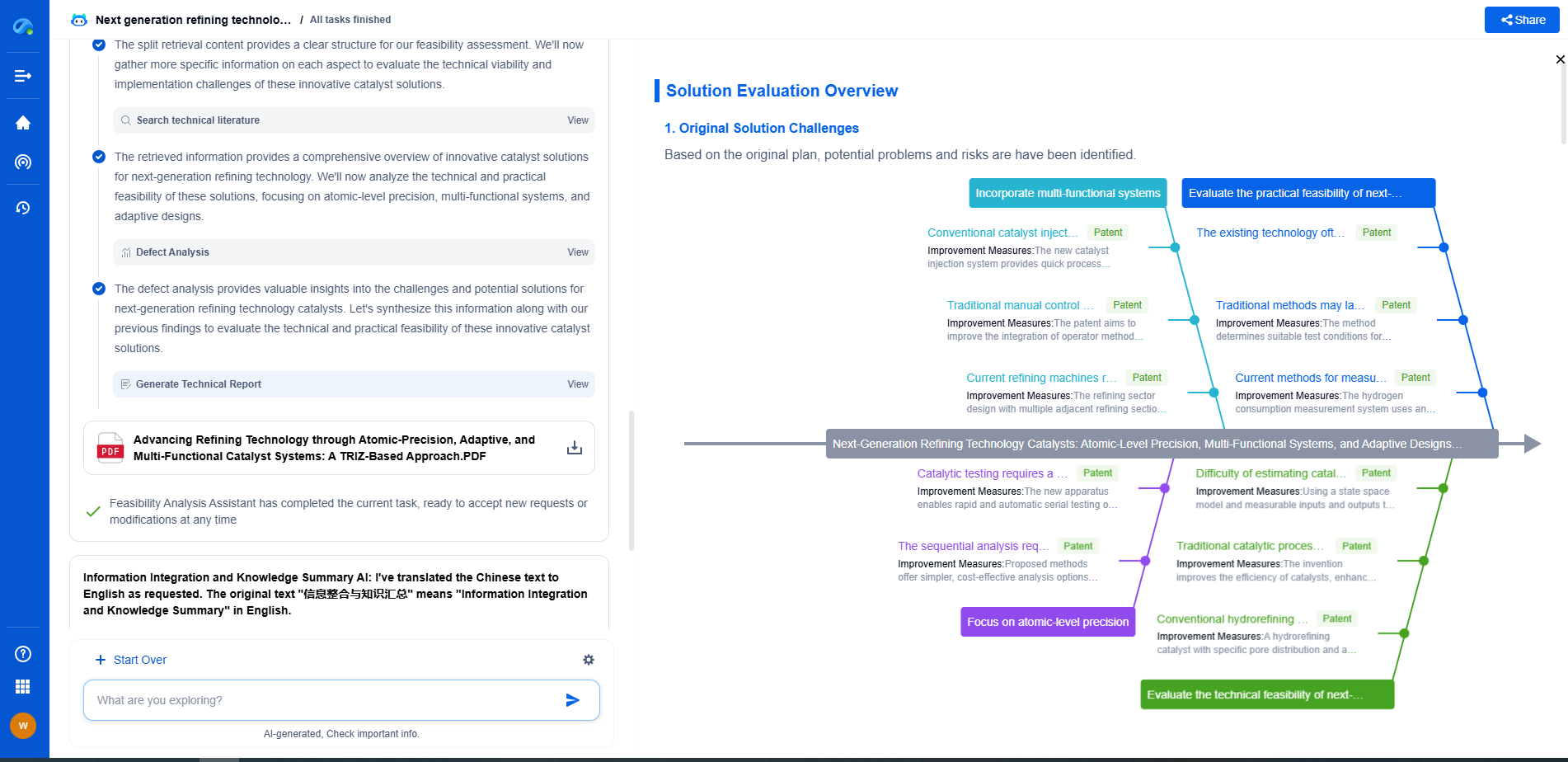How to Prepare for a Compliance Audit in Electronics Manufacturing
JUN 27, 2025 |
Compliance audits play a crucial role in ensuring that electronics manufacturing companies adhere to industry regulations, safety standards, and best practices. These audits can help identify potential risks and inefficiencies in processes, ultimately leading to improved product quality and operational effectiveness. Preparing for a compliance audit requires meticulous planning and understanding of the specific regulations and standards applicable to your operations.
Identify Relevant Regulations and Standards
The first step in preparing for a compliance audit is to identify the relevant regulations and standards that apply to your manufacturing processes. This might include international standards such as ISO 9001 for quality management systems, ISO 14001 for environmental management, and specific regulations governing electronic components like the Restriction of Hazardous Substances (RoHS) directive. Understanding these requirements will help you focus your preparation efforts and ensure that your processes are fully aligned with industry expectations.
Conduct a Self-Assessment
Before the official audit, conduct a thorough self-assessment of your operations. This involves reviewing existing documentation, processes, and systems to identify any areas that may need improvement. Create a checklist based on the standards you need to comply with and methodically evaluate each aspect of your operations. This proactive approach will help you pinpoint potential issues and address them before the actual audit, reducing the risk of non-compliance.
Review Documentation and Records
Documentation is a critical component of compliance audits. Ensure that all records are up-to-date, organized, and easily accessible. This includes quality management documents, environmental policies, safety protocols, and any other relevant paperwork. Accurate and comprehensive documentation demonstrates your commitment to compliance and can significantly simplify the audit process. Regularly review and update these documents to reflect any changes in your operations or the regulations.
Train Your Staff
A well-prepared team is your best asset during a compliance audit. Conduct training sessions to ensure that all employees are familiar with the regulations and standards affecting their specific roles. They should understand the importance of compliance and know how to properly document and report any issues. Training should be continuous and reflect the latest industry changes, ensuring that your team remains knowledgeable and capable of maintaining compliance.
Strengthen Internal Controls
Internal controls are vital for safeguarding compliance in electronics manufacturing. Evaluate and strengthen these controls to ensure they effectively monitor and manage risks. This might involve implementing automated systems for tracking compliance-related activities or enhancing oversight processes. Effective internal controls not only help you pass audits but also protect your operations from potential disruptions and liabilities.
Focus on Continuous Improvement
Compliance is not a one-time event but a continuous process. Establish a culture of continuous improvement within your organization to foster ongoing compliance. Regularly review audit results and use them to identify areas for enhancement. Encourage innovation and the adoption of best practices to keep your operations efficient and compliant with evolving standards.
Engage with External Experts
If possible, engage with external experts or consultants who specialize in compliance for electronics manufacturing. These professionals can provide valuable insights and advice on best practices, helping you prepare effectively for audits. They can also conduct mock audits to simulate the real process, allowing you to identify and address potential weaknesses before the official audit.
Final Preparations
As the audit date approaches, make final preparations to ensure a smooth process. Confirm the availability of key personnel, organize necessary documentation, and review your self-assessment findings. Prepare a welcoming environment for auditors and ensure that employees are ready to assist and provide information as needed.
Conclusion
Preparing for a compliance audit in electronics manufacturing requires a strategic approach that focuses on understanding regulations, conducting self-assessments, training staff, and fostering continuous improvement. By implementing these strategies, you can not only ensure compliance but also enhance the overall quality and efficiency of your operations, paving the way for long-term success in the industry.
Empower Your Breakthroughs in Basic Electric Components with Patsnap Eureka
From resistors, capacitors, and inductors to fuses, connectors, superconductors, and nano-scale materials—basic electric elements may be the building blocks of modern electronics, but the innovation behind them is anything but simple. As device miniaturization accelerates and materials science pushes new frontiers, R&D and IP teams face increasing complexity in staying on top of technical advancements, patent activity, and competitive landscapes.
Patsnap Eureka, our intelligent AI assistant built for R&D professionals in high-tech sectors, empowers you with real-time expert-level analysis, technology roadmap exploration, and strategic mapping of core patents—all within a seamless, user-friendly interface.
🔧 Whether you’re optimizing energy storage, improving thermal resistance, or creating the next leap in circuit efficiency, Patsnap Eureka is your AI copilot for high-efficiency, high-precision R&D and IP strategy.
👉 Experience how Patsnap Eureka can revolutionize your R&D and IP strategy. Request a demo today and power up your next breakthrough.
- R&D
- Intellectual Property
- Life Sciences
- Materials
- Tech Scout
- Unparalleled Data Quality
- Higher Quality Content
- 60% Fewer Hallucinations
Browse by: Latest US Patents, China's latest patents, Technical Efficacy Thesaurus, Application Domain, Technology Topic, Popular Technical Reports.
© 2025 PatSnap. All rights reserved.Legal|Privacy policy|Modern Slavery Act Transparency Statement|Sitemap|About US| Contact US: help@patsnap.com

